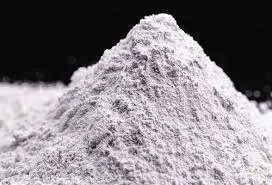
ጥቅም . 19, 2024 10:45 Back to list
hydroxypropyl methyl cellulose manufacturer
The Role of Hydroxypropyl Methyl Cellulose Manufacturers in the Modern Industry
Hydroxypropyl Methyl Cellulose (HPMC) is a widely used cellulose derivative that has found applications across various industries, from pharmaceuticals to food processing, to construction. The manufacturing of HPMC plays a crucial role in meeting the diverse demands of these sectors, which rely on the product's unique properties, such as its thickening, binding, and film-forming capabilities.
Understanding Hydroxypropyl Methyl Cellulose
HPMC is synthesized from natural cellulose, which is chemically modified to enhance its functional properties. Production involves the reaction of cellulose with propylene oxide and methyl chloride, creating a compound with hydroxypropyl and methyl groups. This modification imparts various beneficial properties to the polymer, including water solubility, stability at a range of temperatures, and resistance to organic solvents.
One of the primary advantages of HPMC is its versatility. Depending on the degree of substitution and molecular weight, manufacturers can tailor HPMC to serve specific functions, allowing it to be used in a wide array of applications. For instance, in the pharmaceutical industry, HPMC serves as an excellent encapsulation agent, helping to control the release of active ingredients. It also acts as a binder for tablets, ensuring the necessary cohesion of ingredients.
Applications Across Industries
1. Pharmaceuticals In addition to its use as a binder and encapsulating agent, HPMC is utilized in the preparation of sustained-release formulations. Its gel-forming ability allows for a controlled release of medication, which enhances therapeutic effectiveness and patient compliance. Furthermore, HPMC's safety profile makes it suitable for use in various dosage forms, including tablets, capsules, and topical formulations.
2. Food Industry HPMC is used as a food additive (E464) to improve texture and stability. It acts as a thickener, emulsifier, and stabilizer in a range of products, including sauces, dressings, and baked goods. Its ability to form gels at low concentrations is particularly beneficial in creating low-fat and gluten-free products, where it helps mimic the texture usually provided by fats or gluten.
hydroxypropyl methyl cellulose manufacturer

3. Construction In the construction sector, HPMC is an essential ingredient in mortar, plaster, and adhesive formulations. It enhances the workability of these materials, allowing for easier application and improved adhesion to surfaces. Additionally, HPMC helps to retain water in mortars, providing sufficient hydration for the curing process, which is vital for achieving desired strength and durability.
4. Cosmetics and Personal Care HPMC is common in cosmetic formulations due to its thickening and film-forming properties. It is used in creams, lotions, and gels, where it helps achieve a desirable texture and consistency while also improving product stability.
The Manufacturing Process
HPMC manufacturers follow a stringent and highly controlled process to ensure the quality and consistency of the product. The manufacturing process includes cellulose pulping, purification, and the chemical modification of cellulose to create HPMC. Advanced technologies and quality control measures are employed to monitor every stage of production, from raw material sourcing to final product testing.
Precision in the manufacturing process is crucial, as even minor variations in the degree of substitution or molecular weight can significantly affect HPMC's performance. As such, leading manufacturers invest heavily in research and development to improve production techniques and expand the range of applications for HPMC.
Conclusion
The importance of Hydroxypropyl Methyl Cellulose manufacturers cannot be overstated. Their role in supplying this versatile compound is integral to the functionality and quality of products across multiple industries. As demand continues to grow for products that require reliable thickeners, binders, and stabilizers, HPMC manufacturers are at the forefront, innovating and adapting to the needs of the market. With the continual evolution of technology and regulations, the prospects for HPMC and its applications are promising, making it a compound that will remain essential in various sectors for years to come.
-
tile-bonding-additives-for-stronger-bonds
NewsAug.22,2025
-
construction-grade-rdp-for-wholesale-needs
NewsAug.22,2025
-
trusted-wholesale-hec-partners
NewsAug.22,2025
-
hec-solutions-for-industrial-excellence
NewsAug.22,2025
-
construction-additives-need-hpmc-essentials
NewsAug.22,2025
-
hpmc-versatile-cellulose-ether-for-industries
NewsAug.22,2025







